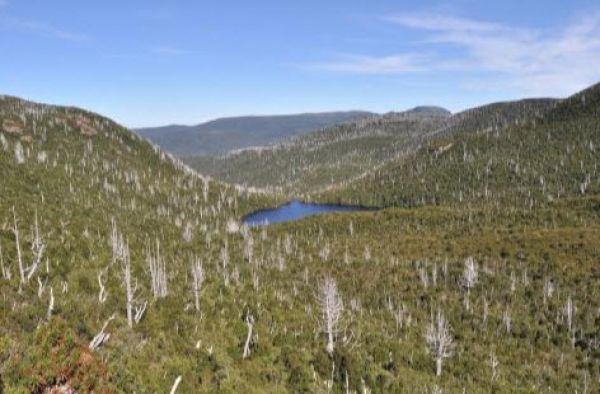Tasmania's ancient rainforest faces a grim future as a warming climate and the way people used the land have brought significant changes to the island state off mainland Australia's southeastern coast, according to a new Portland State University study.
The study holds lessons not only for Australia – whose wildfires have been dominating headlines in recent months – but for other areas of the world that are seeing drying conditions and increased risk of wildfires.
Andrés Holz, the study's lead author and associate professor of geography at PSU's College of Liberal Arts and Sciences, studied the population decline of King Billy pine trees (Athrotaxis selaginoides), a coniferous species native to Tasmania that dates back to when Australia was part of a supercontinent called Gondwana. This paleoendemic tree species occupies large tracks of the UNESCO World Heritage Area in Tasmania and is considered a vulnerable species by the World Conservation Union.
The study found that increasingly frequent fires caused by regional dry and warming trends and increased ignitions – by humans during the early arrival of Europeans to Tasmania and more recently due to increases in lightning -- are breaching fire refugia. Refugia are protected areas that don’t burn or, if they do, are areas where trees survive most wildfires.
Read more at Portland State University
Photo: Dead Billy King pines in Tasmania's ancient temperate rainforest. CREDIT: Cameron Naficy


